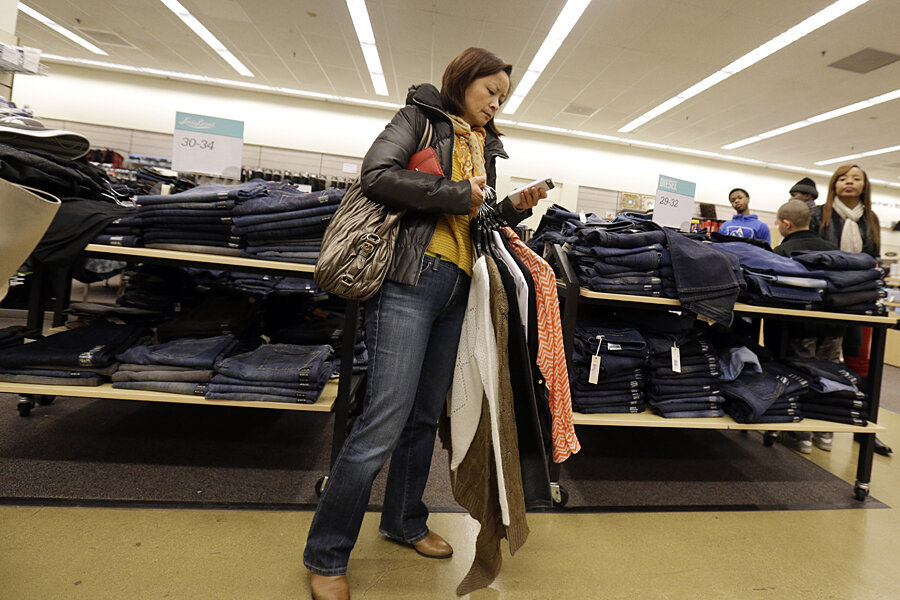Retail sales fall again. Why aren’t Americans spending money?
Loading...
There’s been a lot going on lately to prompt US consumers to open up their wallets a little bit. The job market continues to surge, and wages finally took a big step forward last month. Gas prices are still low, and Americans are feeling better about the economy than they have in years.
Yet, they aren’t spending money. US retail sales stumbled 0.8 percent in January, a far steeper drop than the 0.4 percent decline economists were expecting, according to data released Thursday by the Commerce Department. Following a 0.9 percent slide in December, last month marked the second straight time that retail sales have lost steam.
Gasoline sales led the slide, plunging 9.3 percent thanks to a continued drop in prices. That dragged the headline figure down significantly, but it wasn’t the whole story. Core sales, which exclude more volatile categories like gas, auto sales (down 0.5 percent last month), food, and building materials, were up only 0.1 percent. All told, six of the major 13 sales categories showed declines.
“After two months of above-trend results, the December and January retail sales data were considerably weaker even after eliminating the effect of sharply lower gasoline prices,” MFR Inc. economist Joshua Shapiro wrote in an e-mailed analysis. “The January result has [the first quarter] off to a weak start, which is consistent with our forecast that real consumer spending in the quarter will grow at only about one-half the above-trend pace recorded in [the fourth quarter].”
So what’s going on? Things are undoubtedly easing up on the average consumer. Employment sits well below 6 percent and continues to improve. Wages, after stagnating for years, jumped 0.5 percent last month. Gas prices have plunged 39.5 percent since June – the national average jumped sharply to $2.21 per gallon last week, but it hovered near $2.00 per gallon through January. As a result, measures of consumer confidence continue to trend upward.
Still, Americans who have been scrimping and saving for years may not be quite ready to loosen the purse strings, Diane Lim, an economist at the Committee for Economic Development, a Washington-based think tank, said in a phone interview with the Monitor last week. “We’re seeing a huge drop in the costs that households face, but we aren’t seeing them spending those savings,” she noted.
Instead, people are choosing to shore up savings that took a hit during leaner times, or pay down debt, she adds. “Demand is still not that strong. Gas prices make a big difference in my discretionary income, but they could go back up tomorrow.”
Still, analysts expect forces like cheaper gas and continued improvement in the labor market to boost spending in the coming months. “Labor market conditions will be the key factor for the consumer, and evidence concerning job growth therefore will remain the paramount economic variable for some time,” Mr. Shapiro writes. “Recent much improved labor market conditions suggest that the underlying pace of overall real consumer spending is likely to gradually make its way back.”






